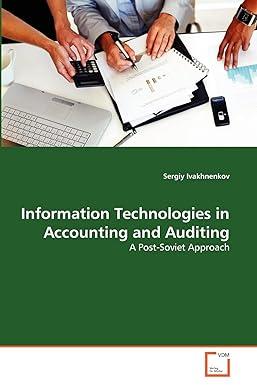Question
Netflix Case : Netflix was founded by Reed Hastings and Marc Randolph in Scotts Valley, California in 1997. Netflix went public on March 12, 2003
Netflix Case : Netflix was founded by Reed Hastings and Marc Randolph in Scotts Valley, California in 1997. Netflix went public on March 12, 2003 when its shares began trading on the NASDAQ stock exchange. Initially, Netflixs business model was a subscription service that allowed subscribers to rent a certain number of DVDs at the same time with no due dates, late fees or shipping charges. For example, as of December 2003, the base subscription plan allowed subscribers to have three DVDs at a time for $19.95 per month. Subscribers chose titles at www.netflix.com and as soon as the subscriber returned a DVD, a new one was shipped from the subscribers queue. DVDs were shipped through the mail and were returned by the customer through the mail in a prepaid mailer. Over time, and with the advent of new technology, Netflixs business model began to shift. In its 2009 annual report to shareholders, Netflix stated that its core strategy was to grow a large subscription business consisting of streaming and DVD-by-mail content. However, in its 2010 annual report, Netflix stated that its core strategy was to grow our streaming subscription business within the United States and globally. As co-founder Reed Hastings famously stated, We named the company Netflix for a reason, we didnt name it DVDs-by-mail. The shift from a DVD-by-mail company to an online video streaming company created challenges for Netflix. One of these challenges related to the companys financial reporting. Under the DVD-by-mail business strategy, Netflix accounted for DVDs as long-term assets amortized over a one to three year period using the sum-of-the-months accelerated basis over the DVDs useful life. The company typically used a one-year useful life for new release DVDs and a three-year useful life for older, back-catalog DVDs. The estimated useful life took into account both the durability of the DVD as well as customer interest in the movie. Under the DVD model, approximately 40% of Netflixs DVD assets were amortized each quarter. Once Netflix began investing in streaming content, its content acquisition costs became much larger. The company typically acquired 3 to 5 year streaming contracts with high up-front costs which were amortized over the life of the streaming content. By 2011, Netflixs quarterly amortization had dropped to 24%. Analysts and investors questioned the company on its new amortization methods, concerned that Netflix was amortizing, in some cases, the same film over a longer time period based on it being in a streaming format rather than a physical DVD. Additionally, the asset recognition criteria at the time required that in order for Netflix to treat a content streaming agreement as an asset, the titles included in the streaming agreement must be known, the cost per title must be determinable, and the title must be available for streaming. While some of Netflixs content streaming agreements met these criteria, not all did. (See Appendix 4). Netflixs historical financial statements are included in Appendices 1 through 3. An example of straight-line amortization for a DVD collection is included in Appendix 5. Finally, Appendix 6 includes an example of DVD amortization using the sum-of-the-months accelerated basis.
1. Are you concerned with the lower rate of content amortization under the streaming strategy versus the DVD-by-mail strategy (24% per quarter versus 40% per quarter)?
2. Under the asset recognition criteria, some content agreements do not qualify as assets. Therefore, the asset and associated liability would not appear on the balance sheet. Should this be a concern for investors? Why?
3. How will Netflixs foray into content development (creating its own shows) impact its content amortization? Case Instructions: Please type up your responses to these questions and submit the completed case assignment via Blackboard. Your response should make up approximately one page single spaced.
Step by Step Solution
There are 3 Steps involved in it
Step: 1

Get Instant Access to Expert-Tailored Solutions
See step-by-step solutions with expert insights and AI powered tools for academic success
Step: 2

Step: 3

Ace Your Homework with AI
Get the answers you need in no time with our AI-driven, step-by-step assistance
Get Started


